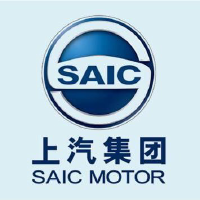Company Analysis Daqin Railway Co., Ltd.
1. Summary
Advantages
- Price (5.92 ¥) is less than fair price (7.7 ¥)
- The stock's return over the last year (-9.49%) is higher than the sector average (-41.59%).
- The company's current efficiency (ROE=8.97%) is higher than the sector average (ROE=8.63%)
Disadvantages
- Dividends (0%) are below the sector average (0.5102%).
- Current debt level 20.78% has increased over 5 years from 6.24%.
Similar companies
2. Share price and performance
2.1. Share price
2.2. News
2.3. Market efficiency
| Daqin Railway Co., Ltd. | Industrials | Index | |
|---|---|---|---|
| 7 days | -1.8% | 0.3% | 2.5% |
| 90 days | -2.6% | -37% | -2.6% |
| 1 year | -9.5% | -41.6% | 26.2% |
601006 vs Sector: Daqin Railway Co., Ltd. has outperformed the "Industrials" sector by 32.1% over the past year.
601006 vs Market: Daqin Railway Co., Ltd. has significantly underperformed the market by -35.69% over the past year.
Stable price: 601006 is not significantly more volatile than the rest of the market on "Shanghai Stock Exchange" over the last 3 months, with typical variations of +/- 5% per week.
Long period: 601006 with weekly volatility of -0.1824% over the past year.
3. Summary of the report
4. Fundamental Analysis
4.1. Stock price and price forecast
Below fair price: The current price (5.92 ¥) is lower than the fair price (7.7 ¥).
Price significantly below the fair price: The current price (5.92 ¥) is 30.1% lower than the fair price.
4.2. P/E
P/E vs Sector: The company's P/E (9.64) is lower than that of the sector as a whole (78.67).
P/E vs Market: The company's P/E (9.64) is lower than that of the market as a whole (64.64).
4.2.1 P/E Similar companies
4.3. P/BV
P/BV vs Sector: The company's P/BV (0.7543) is lower than that of the sector as a whole (4.04).
P/BV vs Market: The company's P/BV (0.7543) is lower than that of the market as a whole (3.08).
4.3.1 P/BV Similar companies
4.4. P/S
P/S vs Sector: The company's P/S indicator (1.42) is lower than that of the sector as a whole (3.05).
P/S vs Market: The company's P/S indicator (1.42) is lower than that of the market as a whole (6.41).
4.4.1 P/S Similar companies
4.5. EV/Ebitda
EV/Ebitda vs Sector: The company's EV/Ebitda (4.45) is lower than that of the sector as a whole (22.72).
EV/Ebitda vs Market: The company's EV/Ebitda (4.45) is lower than that of the market as a whole (17.31).
5. Profitability
5.1. Profitability and revenue
5.2. Earnings per share - EPS
5.3. Past profitability Net Income
Yield Trend: Rising and has grown by 1.9% over the last 5 years.
Earnings Slowdown: The last year's return (0%) is below the 5-year average return (1.9%).
Profitability vs Sector: The return for the last year (0%) is lower than the return for the sector (0%).
5.4. ROE
ROE vs Sector: The company's ROE (8.97%) is higher than that of the sector as a whole (8.63%).
ROE vs Market: The company's ROE (8.97%) is higher than that of the market as a whole (8.24%).
5.5. ROA
ROA vs Sector: The company's ROA (5.82%) is higher than that of the sector as a whole (4.27%).
ROA vs Market: The company's ROA (5.82%) is higher than that of the market as a whole (4.08%).
5.6. ROIC
ROIC vs Sector: The company's ROIC (0%) is lower than that of the sector as a whole (0%).
ROIC vs Market: The company's ROIC (0%) is lower than that of the market as a whole (0%).
7. Dividends
7.1. Dividend yield vs Market
Low yield: The dividend yield of the company 0% is below the average for the sector '0.5102%.
7.2. Stability and increase in payments
Dividend stability: The company's dividend yield 0% has been steadily paid over the past 7 years, DSI=0.86.
Weak dividend growth: The company's dividend yield 0% has been growing weakly or stagnant over the past 5 years. Growth over only 0 years.
7.3. Payout percentage
Dividend Coverage: Current payments from income (66.71%) are at a comfortable level.
Pay for your subscription
More functionality and data for company and portfolio analysis is available by subscription


